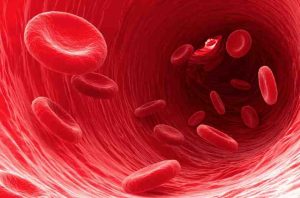
Imagine your heart is a pump, constantly working to send oxygen-rich blood throughout your body. But what if that pump weakens?
This is what happens in heart failure, a condition affecting millions of people. There’s no cure, but a new treatment using stem cells shows promise. Let’s break it down:
Understanding Heart Failure:
- Over 6 million Americans live with heart failure, meaning their hearts can’t pump as effectively.
- This reduced pumping strength means the body doesn’t get enough oxygen, leading to organ damage and potentially death.
- Doctors diagnose heart failure by measuring the percentage of blood leaving the heart with each beat (LVEF). A healthy LVEF is 55-70%, while below 40% indicates heart failure with reduced ejection fraction (HFrEF).
- Unfortunately, there’s no cure for heart failure. Medications, lifestyle changes, and surgery can manage symptoms and slow progression, but a transplant may be needed in severe cases. These transplants are rare due to a shortage of donor hearts.
The Culprit: Inflammation
- New research suggests inflammation plays a key role in heart failure.
- Inflammation is the body’s natural response to fight injury or illness, but chronic inflammation in the heart can be harmful.
- Think of it like a tiny fire smoldering inside your heart, damaging the tissue over time.
- This inflammation can worsen heart failure and increase the risk of heart attacks and strokes, the major causes of death in these patients.
Stem Cells to the Rescue?
- A company called Mesoblast is developing a treatment targeting this inflammation using stem cells.
- Stem cells are like blank slates with the potential to develop into various cell types.
- The specific type used here, called mesenchymal precursor cells (MPCs), are found in bone marrow and have anti-inflammatory properties.
- Mesoblast isolates these MPCs from healthy adult donors, multiplies them in a lab, and injects them directly into the heart muscle of patients with HFrEF.
Testing the Treatment:
- Mesoblast conducted a large-scale clinical trial (rexlemestrocel-L) with over 500 participants.
- Half received an injection of MPCs, while the other half received a placebo (a harmless injection with no active ingredient).
- All participants continued their standard heart failure treatment throughout the trial.
- The primary goal of the trial was to see if the MPCs reduced the number of hospitalizations due to worsening heart failure. Unfortunately, this goal wasn’t met – both groups had similar hospitalization rates.
But Wait, There’s More!
- Even though the primary goal wasn’t achieved, the trial revealed some exciting findings:
- The risk of heart attack or stroke dropped by a significant 58% in the MPC group compared to the placebo group. This reduction was even greater (75%) in patients with high inflammation levels.
- LVEF, the measure of heart pumping strength, also improved in the MPC group, especially in those with high inflammation.
- These results suggest that MPCs might not directly improve heart function but could effectively combat the underlying inflammation, leading to a reduced risk of heart attacks, strokes, and potentially even improved heart function over time.
The Road Ahead:
- Clinical trials typically focus on one main objective. While the primary goal wasn’t reached here, the positive findings on heart attacks, strokes, and LVEF are considered “hypothesis-generating.” This means they provide strong evidence to support further investigation.
- Mesoblast and researchers are optimistic and plan to conduct another trial to confirm these findings. If successful, this could pave the way for stem cell therapy to become a mainstream treatment for heart failure.
The Big Picture:
This research is a major step forward in the fight against heart failure. While there’s still work to be done, it offers a glimmer of hope for millions struggling with this debilitating condition. Stem cell therapy could potentially become a powerful weapon against heart failure, offering a new approach to managing this disease and improving patient outcomes.


